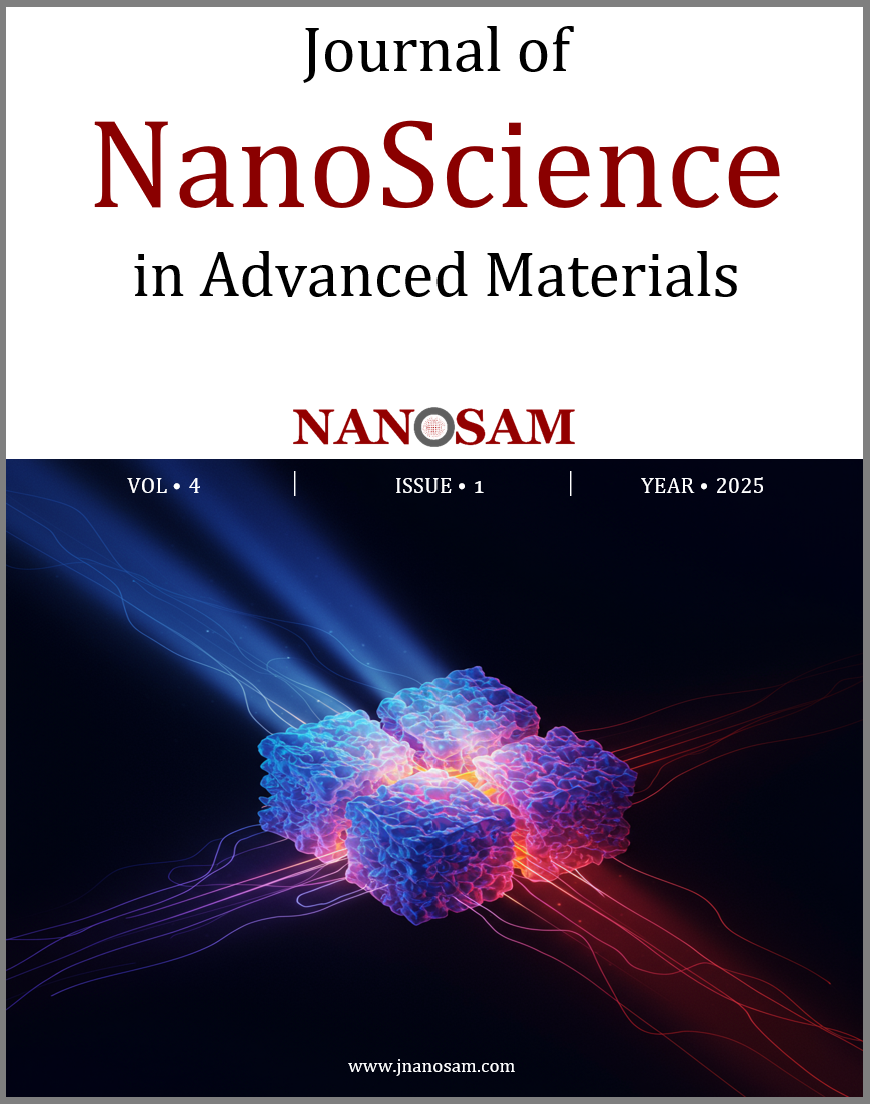Optoelectronic Characterization for Some of the Thermally Activated Delayed Fluorescence (TADF) Emitters Using Density Functional Theory (DFT)
DOI:
https://doi.org/10.5281/zenodo.15712981Keywords:
Density Functional Theory (DFT), Thermally activated delayed fluorescence (TADF) emitters, Optoelectronic characterizationAbstract
Materials that exhibit thermally activated delayed fluorescence (TADF) are of great interest for organic light-emitting diodes (OLEDs) due to their ability to achieve 100% external quantum efficiency (EQE) without the need to incorporate heavy atoms. Since high-efficiency blue-emitting materials are still in demand, the pyrazine core was used in this study because of its high S1 energy and weak electron-accepting ability. Therefore, pyrazine-based multi-carbazoles compounds 1–3 were studied using density functional theory (DFT) and time-dependent DFT (TD-DFT) methods. The simulated electronic and photophysical properties of the compounds agree with experimental observations. All compounds exhibit blue emission at 2.77, 2.68, and 2.62 eV, respectively. Replacing one biphenyl group with a carbazole unit (compound 2) decreases the ES1-T1 to 1.09 eV. Replacing two biphenyl groups with carbazole units (compound 3) further reduces ES1-T1 to 0.26 eV, facilitating the TADF mechanism. All compounds display mixed transitions of charge-transfer and locally excited character due to the increased donor ability with the addition of carbazole units.
References
Kessler, F., Watanabe. Y., Sasabe, H., Katagiri, H., Nazeeruddin, M.K., Grätzel, M., Kido, J., High-performance pure blue phosphorescent OLED using a novel bis-heteroleptic iridium(III) complex with fluorinated bipyridyl ligands. Journal of Materials Chemistry C. 1(6), 1070–1075 (2013).
Fan, C., Yang, C., Yellow/orange emissive heavy-metal complexes as phosphors in monochromatic and white organic light-emitting devices. Chemical Society Reviews. 43(17), 6439–69 (2014).
Pal, A.K., Krotkus, S., Fontani, M., Mackenzie, C.F., Cordes, D.B., Slawin, A.M., Samuel, I.D., Zysman‐Colman, E., High-efficiency deep-blue-emitting organic light-emitting diodes based on iridium(III) carbene complexes. Advanced Materials. 30(50), 1–10 (2018)
Chen, D., Zhang, L., Matulaitis, T., Cordes, D.B., Slawin, A.M., Zhang, X.H., Samuel, I.D., Zysman-Colman, E., Tuning the emission and exciton utilization mechanisms of pyrazine-based multi-carbazole emitters and their use in organic light-emitting diodes. Journal of Materials Chemistry C. 11(38), 13095–13105 (2023).
Rajamalli, P., Chen, D., Suresh, S.M., Tsuchiya, Y., Adachi, C., Zysman-Colman, E., Planar and rigid pyrazine-based TADF emitter for deep blue bright organic light-emitting diodes. European Journal of Organic Chemistry. 2021(16), 2285–2293 (2021).
Salah, L., Etherington, M.K., Shuaib, A., Danos, A., Nazeer, A.A., Ghazal, B., Prlj, A., Turley, A.T., Mallick, A., McGonigal, P.R., Curchod, B.F., Suppressing dimer formation by increasing conformational freedom in multi-carbazole thermally activated delayed fluorescence emitters. Journal of Materials Chemistry C. 9(1), 189–198 (2021).
Wardle, B., The physical deactivation of excited states. (3) (Eds: Wardle, B), John Wiley & Sons (2009).
Vlček, A., Záliš, S., Modeling of charge-transfer transitions and excited states in d6 transition metal complexes by DFT techniques. Coordination Chemistry Reviews. 251(3–4), 258–287 (2007).
Meng, X., Chen, M., Bai, R., He L., Cationic Iridium Complexes with 3,4,5-triphenyl-4H-1,2,4-triazole type cyclometalating ligands, synthesis, characterizations, and their use in light-emitting electrochemical cells. Inorganic Chemistry Journal. 59(14), 9605–17 (2020).
Costa, R.D., Ortí, E., Bolink, H.J., Graber, S., Schaffner, S., Neuburger, M., Housecroft, C.E., Constable, E.C., Archetype cationic iridium complexes and their use in solid-state light-emitting electrochemical cells. Advanced Functional Materials. 19(21), 3456–3463 (2009).
Costa, R.D., Ortí, E., Tordera, D., Pertegás, A., Bolink, H.J., Graber, S., Housecroft, C.E., Sachno, L., Neuburger, M., Constable, E.C., Stable and efficient solid-state light-emitting electrochemical cells based on a series of hydrophobic iridium complexes. Advanced Energy Materials. 1(2), 282–290 (2011).
Henwood, A.F., Pal, A.K., Cordes, D.B., Slawin, A.M., Rees, T.W., Momblona, C., Babaei, A., Pertegás, A., Orti, E., Bolink, H.J., Baranoff, E., Blue-emitting cationic iridium(III) complexes featuring pyridylpyrimidine ligands and their use in sky-blue electroluminescent devices. Journal of Materials Chemistry C. 5(37), 9638–9650 (2017).
Evariste S, Sandroni M, Rees TW, Roldán-Carmona C, Gil-Escrig L, Bolink HJ, et al. Fluorine-free blue-green emitters for light-emitting electrochemical cells. Journal of Materials Chemistry C.2(29), 5793–5804 (2014).
Cortés-Arriagada D, Dreyse P, Salas F, González I. Insights into the luminescent properties of anionic cyclometalated iridium(III) complexes with ligands derived from natural products. International Journal of Quantum Chemistry. 118(17), 1–12 (2018).
Downloads
Published
How to Cite
Issue
Section
License
Copyright (c) 2025 Journal of NanoScience in Advanced Materials

This work is licensed under a Creative Commons Attribution-NonCommercial 4.0 International License.
Accepted 2025-05-21
Published 2025-06-26









